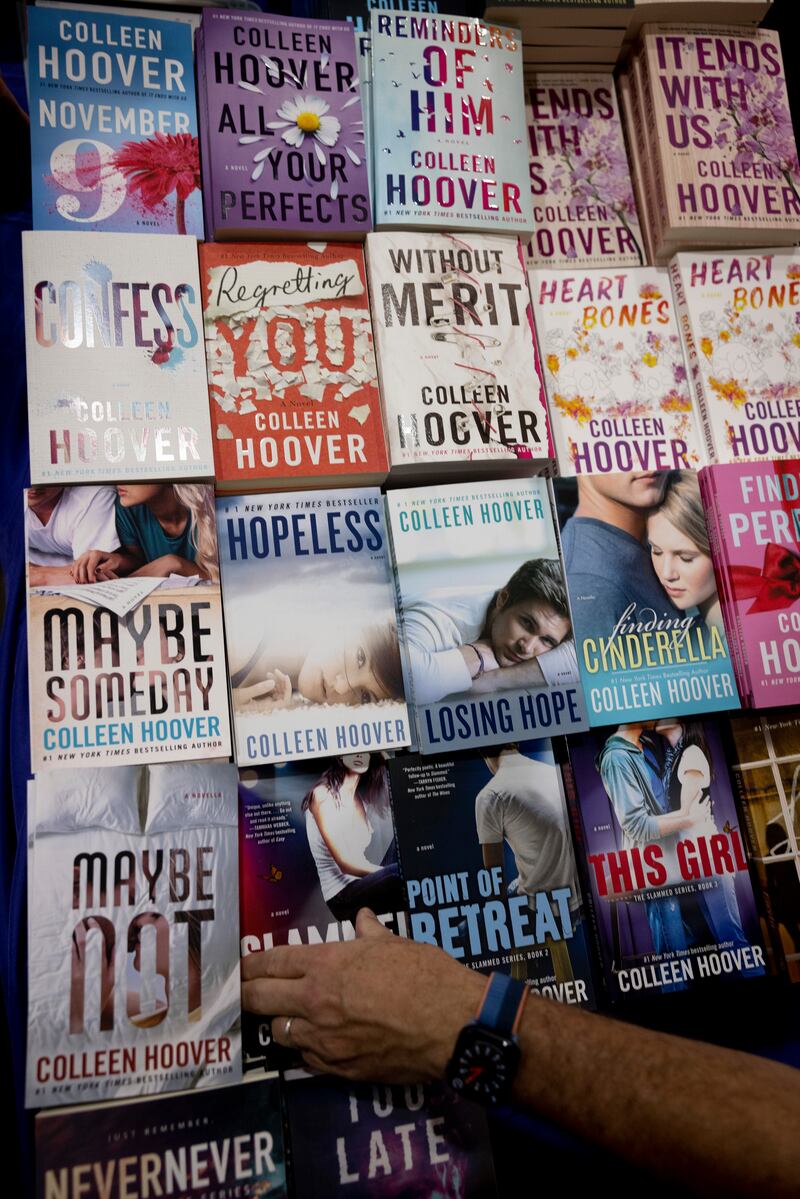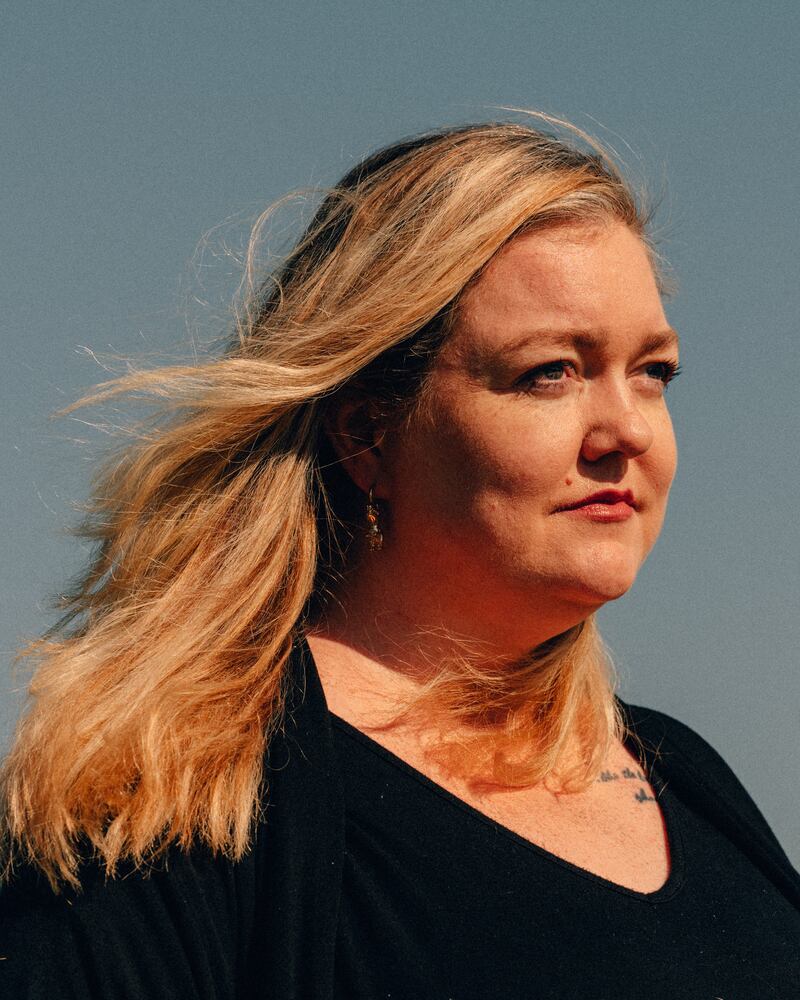There are the novels the literary world acclaims, and there are the novels people actually read. Occasionally – perhaps with decreasing frequency – they are one and the same. But apart from momentary blips when best-seller and critical darling align (Colson Whitehead, Margaret Atwood, Ocean Vuong), they usually diverge.
Every era has its authors whose novels are at best overlooked and at worst disparaged by the literary cognoscenti and still dominate best-seller lists. These books succeed not only despite the critics but almost as if to spite them.
Thus EL James, whose grey-shaded erotica in the 2010s gave readers edgy princess narratives. James’ books emerged out of fan fiction she wrote based on the Twilight saga, Stephenie Meyer’s romance successes from a few years before. Meyer, in turn, offered a chaste variation on the promiscuous bloodsuckers of Anne Rice. And back in Rice’s heyday of the 1980s and 90s, mass market copies of her Interview With the Vampire occupied the same spinning racks as other critically slammed authors of the 70s and 80s: Danielle Steel, Sidney Sheldon, Judith Krantz, Jackie Collins. Whopping best-sellers, all.
With rare exceptions, these books are written by women, for women. This kind of commercial novel, sometimes slapped with the cringey label “women’s fiction”, includes all manner of genre, from domestic thriller to romance, with the exception of spy novels, hard crime and chest-beating Tom Clancy-style thrillers.
‘Christ, I’m angry’: Ciara Doherty’s striking interview with Andrew McGinley
I miss Ireland’s wildness and divilment, but after 20 years away, I know it’s not for me
Mark Lanegan, my uncle, died out of the blue after moving to Ireland
Bob Dylan in Dublin: It’s gripping, baffling and something to behold
And for the past few years, these books have been written by Colleen Hoover.
In 2022 alone, Hoover’s novels sold 14.3 million copies and in total, more than 24 million copies to date. Time magazine named Hoover one of the most influential people of 2023. Like several other successful 21st-century novelists, she began her career by self-publishing.
But Hoover’s innovation was to capitalise on the nascent world of BookTok, a literary community on TikTok where legions of her followers (self-appointed “Cohorts”) pour out emojis over her posts and generate their own videos extolling the weepy pleasures of her fiction, vastly expanding the audience for It Ends With Us and It Starts With Us and the other 22 novels that constitute Hoover’s oeuvre. As Hoover herself explained her popularity in an interview in the New York Times, “It’s not me. The readers are controlling what is selling right now.”
But why? What is it about Hoover’s stories – which dwell largely in romance but also include a thriller and a ghost story – that women are drawn to?
There was only one way to find the answer, and I didn’t need to look far. Nearly every bookstore contains a designated Hoover table, display case or section, stuffed with vague but grabby titles like All Your Perfects and Ugly Love. I slurped down three of them in one week. I found myself carrying them from room to room, slipping in what would begin as just a few pages but then stretch into hours’ worth.

Hoover’s books go down like a “too much information” Facebook confessional, rubbernecking you in from the first sentence. Certain patterns quickly emerge. Poor white strivers with trauma in their pasts and the cards stacked against them (impossible parents, failed romances, familial abuse) typically move away from home and then work their way toward career success, emotional recovery, spellbinding love and superlative sex.
Other Hooverian devices become familiar too. Characters often have names that are so obscure, they barely seem like real names (Ryle, Lowen, Chastin, Atlas, Crew) but might wind up climbing the baby name list – now you know why – in a few years’ time. Chapters end in italicised cliffhangers: “Until he discovered the one thing that meant more to him than I did.”
Parents often die within the first few pages. A mother’s meth overdose in Heart Bones. An abusive father’s funeral in It Ends With Us. A long-suffering mother’s death from cancer in Verity. The adult child then enters the real world.
There is a Taylor Swift-y intimacy to Hoover’s narratives, which are often in the form of diary entries or simply read that way. (“I immediately want to cry again, so I force myself off the bed. I focus on the hollowness in my stomach as I use the bathroom ... ”) Every emotion trembles at the surface. (“I. Was. Taken. By. Him. Addicted to him.”)
Emotions tend to be described rather than evoked. (“My mind begins to spin with worry, sadness, fear.”) All feelings are big feelings. (“I cry so hard, I don’t even make a noise.”) Passions ricochet with the I-hate-you-but-I-love-you intensity of texts exchanged during a couple’s first big smartphone-based fight. (“I wonder what colour his eyes are. No. I don’t wonder. I don’t care.”)

Although Hoover’s settings bop around the US, from Boston to New York to Texas to Vermont, the only contextual references pertain to pop culture, social media and the occasional local attraction. Politics are confined to the daunting gulf between haves and have-nots, and even when Hoover’s striving heroines find themselves among the haves, their hearts remain forever with the have-nots. In these novels, what matters more than anything else is hardship: Hardship is everywhere, women must suffer, women can heal, and those who make it through all this have the capacity to find themselves/love/happiness. The reader can’t help feeling that the heroine/Hoover is speaking to me/for me/like me.
Fiction of this sort reflects a strain in the culture that has shifted from a fascination with the other – the rich, the powerful, the exclusive – to a more inward preoccupation with the self and the desire to see oneself reflected in the stories one consumes. As with TikTok testimonials of adolescent mental health challenges and group-chat confessions, it’s about “relatability” and the willingness to reveal all. Even celebrities must bare all. Confession trumps mystery.
Women’s popular fiction of the 80s, when the glitter and glamour of Dallas and Dynasty dominated prime-time TV, offers a sharp contrast. In best-sellers of that period, the settings jetted from Monte Carlo to Capri to Rodeo Drive, populated by the rich, famous and destined-to-be. Heroines could have been peeled off the cover of Cosmopolitan magazine: Judith Krantz’s Princess Marguerite Alexandrovna Valensky, aka Daisy, or Jackie Collins’ Lucky Santangelo (“a gambler and a lover, a woman who ruled her empire and pursued her man with the potent Santangelo strength”).
Hoover offers a fantasy that feels attainable. You too could achieve self-actualisation. You too could realise an Oprah Winfrey healing, no matter how much suffering it takes to get you there
In the novels of Sidney Sheldon, to which I graduated in early adolescence after gaping into the fictional attics of VC Andrews, heroines radiated ambition. With just a little perfect sex, grit and naturally superlative beauty, even the up-and-comers were soon stilettoing down the corridors of power toward success in a male-dominated world. I loved those books. To echo a Times review of Sheldon’s work: “Although this may be literary junk food, it is hard to put down once you get started.”
I never shed a tear while reading Sheldon, but that wasn’t the point. The point was exuberant voyeurism, the literary equivalent of Lifestyles of the Rich and Famous. The heroines’ lives were nothing like mine, nor were they meant to be. That’s what made them so absurdly entertaining.
Hoover paints on a more intimate canvas. Her stories aren’t about attaining worldly power on a grand scale, but about finding power within. Through her characters’ personal growth and interpersonal relationships, Hoover offers readers an emotional roadmap to recovery from impostor syndrome, domestic abuse, betrayal, victimisation. It’s a very different kind of achievement.
In a country where economic inequalities can seem insurmountable and systems of power ever more remote, this may be the best her hard-knock heroines – and readers – can hope for. Hoover offers a fantasy that feels attainable. You too could achieve self-actualisation. You too could realise an Oprah Winfrey healing, no matter how much suffering it takes to get you there. For readers invested in characters who are like themselves – if perhaps more beautiful and with more exciting sex lives – the emotional pay-off can still feel hard-earned. And, just possibly, the story could happen to them. – This article originally appeared in the New York Times.












